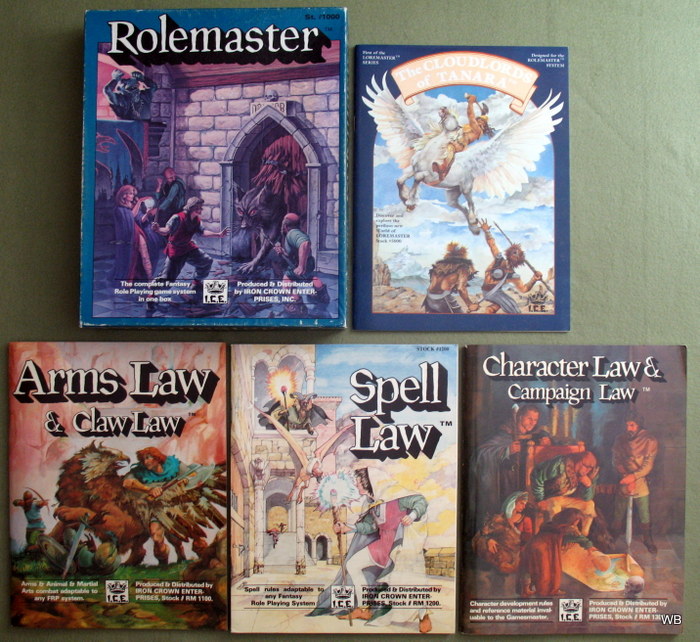This article may be written from a, rather than a. Please to conform to a of quality, and to make it neutral in tone. Principles of soft computing sivanandam deepa ebook torrents download.
Pdf Rolemaster Adventures Pdf To Jpg. 1/12/2018 0 Comments Easily convert JPG, PNG, GIF, BMP and TIFF images to PDF using web-based online tool. • Download your.
( April 2012) () () Rolemaster,,, Publisher(s) Publication date 1980 (first edition) 1999 (fourth edition) Genre(s) System(s) Rolemaster Standard System Rolemaster is a published. Rolemaster has come in four separate editions.
The third edition, first published in 1995, is also known as the Rolemaster Standard System (or RMSS for short). Rolemaster Fantasy Roleplaying (or RMFRP) was first published in 1999 as a reorganized edition of RMSS, and is largely compatible with that edition. The most recent publication of the Rolemaster rule set is Rolemaster Classic (RMC), a republished set of the second edition rules. Rolemaster uses two ten-sided dice Rolemaster uses a percentile dice system and employs both classes (called 'Professions' in Rolemaster) and levels to describe character capabilities and advancement. Task resolution is done by rolling percentile dice, applying relevant modifiers, and looking the result up on the appropriate chart to determine the result.
On the other hand, a bi-directional arrangement of the converter is needed for the reversal of the power flow, in order to recover the vehicle kinetic energy in the battery by means of motor drive regenerative braking operations. This paper deals with the study and comparison of two bi-directional buck-boost converter topologies. Bidirectional buck boost converter topologies pdf.
There are various charts to increase the realism of the results, but most of these are optional, and many rolls can be made on a relatively small number of tables. Combat [ ] For combat each character has an Offensive Bonus (OB), which takes into account one's natural physical adeptness, weapon skill, and other factors, and a Defensive Bonus (DB), which takes into account natural agility, the use of shields and 'Adrenal Defense', the ability of martial artists to avoid blows seemingly without effort.

In addition various modifiers for position, wounds, and other factors are present. An attacking combatant rolls percentile dice, adds his or her OB to the total, adds modifiers, and subtracts the defender's DB. The total is then applied to a table for the attacker's weapon. The attack total is cross-indexed with the type of armor (if any) worn by the defender and the result will be a number of concussion hits dealt, which are then subtracted from the defender's running total. If sufficient hits are dealt, the defender may go unconscious, but death seldom results purely from concussion hit damage. In addition to concussion hits, however, a critical hit can be dealt by the result on the weapon table.
These are described by type (slash, crush, puncture, etc.) and by severity (generally A through E, with E being the most severe). Critical Hits (or simply 'crits'), can inflict additional concussion hits, bleeding (subtracted from concussion hits at the start of each new round), broken bones, loss of limbs or extremities, internal organ damage and outright death. If a crit is inflicted, a second roll is made on the appropriate critical table. Thus, unlike, for example, Dungeons & Dragons, Rolemaster describes wounds not only in the number of points of damage dealt (which are then subtracted from an abstract pool of 'Hit Points'), but with specific details of the injury inflicted. Death occurs, for both player characters and Gamemaster-controlled adversaries, primarily through this critical damage, and not through loss of hit points. In addition, specific injuries carry with them injury penalties, which inhibit further actions on the part of the wounded part, and loss of concussion hits (which represent overall health), can bring about similar penalties.
Almost all die rolls in Rolemaster are 'open-ended', meaning that if a result is high enough (or low enough), one rolls again and add (or subtract) the new roll to the original result - and this can happen multiple times, so in theory, there is no upper limit to how well (or poorly) one can roll. This means that a does have a chance, albeit slight, to put down a with one well-placed (and lucky) dagger strike. However, the fact that one's opponents also fight using these same rules can make Rolemaster a very deadly game for both PCs and NPCs; a lucky shot may let an inexperienced fighter slay a war-hardened veteran. Fans of the system maintain that this adds a great deal of realism not present in many other fantasy games, and reflects the true deadliness of a well-placed strike from a weapon, even a small one such as a dagger. Death from natural weapons (such as a fist or an animal's teeth and claws) can happen but is very rare against armored combatants. Unarmored characters may very well suffer serious wounds when mauled by animals, but again this allows for more credible confrontations than in other fantasy games, where the threat posed by an 'unfantastic' beast such as a wolf, grizzly bear, or tiger is considered minimal.